Princetown
| Princetown | |
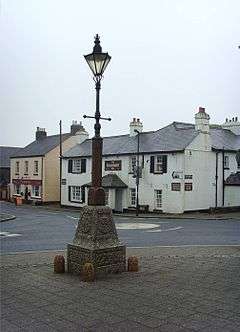 Jubilee Memorial and Railway Inn, Princetown |
|
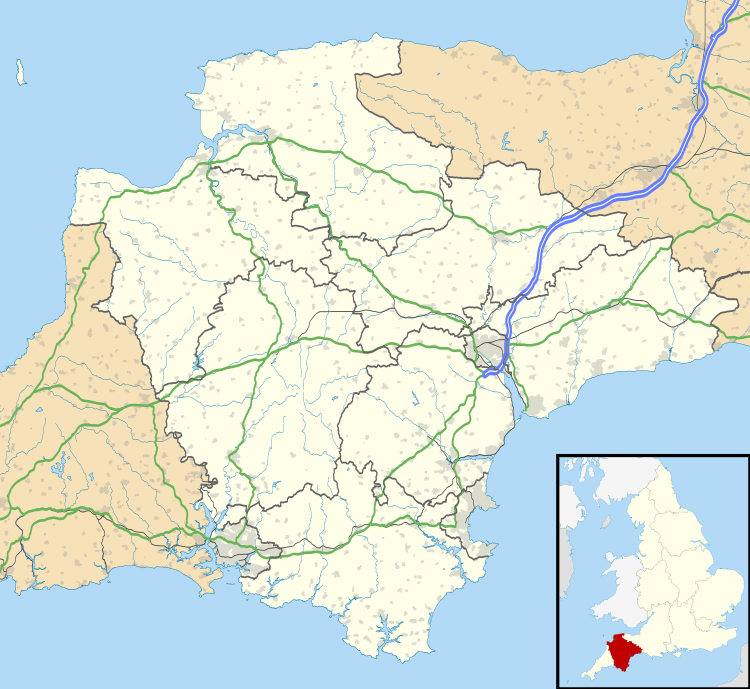 Princetown |
|
| OS grid reference | SX588736 |
|---|---|
| – London | 181 miles (291 km) |
| Civil parish | Dartmoor Forest |
| District | West Devon |
| Shire county | Devon |
| Region | South West |
| Country | England |
| Sovereign state | United Kingdom |
| Post town | YELVERTON |
| Postcode district | PL20 |
| Dialling code | 01822 |
| Police | Devon and Cornwall |
| Fire | Devon and Somerset |
| Ambulance | South Western |
| EU Parliament | South West England |
| UK Parliament | Torridge and West Devon |
Coordinates: 50°32′42″N 3°59′39″W / 50.54507°N 3.99422°W
Princetown is a village[lower-alpha 1] in the Dartmoor national park in the English county of Devon. It is the principal settlement of the civil parish of Dartmoor Forest.
The village has its origins in 1785, when Sir Thomas Tyrwhitt, Secretary to the Prince of Wales, leased a large area of moorland from the Duchy of Cornwall estate, hoping to convert it into good farmland. He encouraged people to live in the area and suggested that a prison be built there. He called the settlement Princetown after the Prince of Wales.
Princetown is the site of Dartmoor Prison. At around 1,430 feet (435 m) above sea level,[1] it is the highest settlement on the moor, and one of the highest in the United Kingdom. It is also the largest settlement located on the high moor. The Princetown Railway, closed in 1956, was also the highest railway line in England: its Princetown terminus was also 1,430 feet above sea level.
History
In 1780, a farm was reclaimed on the site of an ancient tenement near the Two Bridges, and in 1785, Sir Thomas Tyrwhitt set about improving the moor at a place which he named Tor Royal (present day Tor Royal Farm), about 1 km (0.6 mi) south-east of Princetown.[1] He made an estate and built a house in 1798. Later the road from Tavistock to Princetown was built, as well as the other roads that now cross the moor.
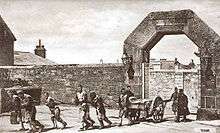
He also proposed that a prison be built on Dartmoor to house the thousands of captives of the Napoleonic Wars and the later War of 1812, who had become too numerous to lodge in the prisons and prison-ships at Plymouth. The site was given by the Prince of Wales, who held the lands of the Duchy of Cornwall to which the whole moor belonged. This is why the settlement is named Princetown. Dartmoor Prison was built in 1806 at a cost of £130,000. At one time it had a capacity of between 7,000 and 9,000 prisoners.
A small town grew up near the prison. Two large inns were built during the war. Many of the prisoners had prize money to come from their own country; many others made their own money in their hammocks at night, even forging Bank of England and local bank notes, which they passed off in the great daily market held in the prison. With the closing of the prison in 1816, the town almost collapsed, but the completion of the Dartmoor Railway in 1823 brought back many people to the granite quarries. The prison remained derelict until 1851, when it was reopened for prisoners serving long sentences. It has since been considerably extended.[2]
Geography
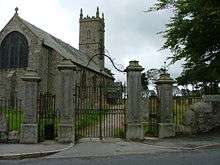
The village is located on the B3212 road between Yelverton and Two Bridges and is surrounded by moorland. Several footpaths across the moor pass through the village, including one leading west to Sampford Spiney and one leading south to Nun's Cross and Erme Head.
Tor Royal Lane is a dead end road which leads down from the village to the site of the disused Whiteworks tin mine, about 2 miles or 3 km to the south-east, which overlooks Fox Tor Mires, the presumed site of the Grimpen Mire to be found in Arthur Conan Doyle's tale The Hound of the Baskervilles. Conan Doyle stayed at the former Duchy Hotel whilst writing and researching the story with his friend, Bertram Fletcher Robinson. The hotel has long since closed and the building now houses the National Park Visitor Centre which is an all-weather centre and activity hub, with interactive displays, films, inspiring exhibitions and a children's discovery area.
Other points of interest in the village include the prison museum and the churchyard which includes the graves of French and American prisoners of war who were housed in the prison. The Church of St Michael has the distinction of being the only one in England constructed by POWs and is dedicated, as are many churches in high locations, to St. Michael. It was taken out of use due to structural problems and damp and is now maintained by the Churches Conservation Trust, although the building has been stabilised and made safe. Services are held nowadays in the Methodist chapel at the other end of the village.
The village is overlooked from the north-west by North Hessary Tor upon which is a tall transmitting mast that provides a useful guide point for walkers from miles around.[3]
Demography
The village is mainly made up of white British people living in a mix of social and private housing. There are currently 74 children enrolled at the primary school and a further 17 at the pre-school, which is contained within the Community Centre in its own purpose-built wing. Most people living in Princetown commute to work in Plymouth or Tavistock, but with the expansion of the brewery more jobs have been created locally. The population is projected to keep increasing in the future[4] mainly due to the improved amenities within the village itself and the relatively high percentage of young people living there.[5] Princetown is undergoing significant regeneration and expansion, with new private housing being built at several sites in the village and a football pitch being built behind the Community Centre. High Moorland Visitor Centre has been renamed as the National Park Visitor Centre, and the area outside the centre altered to include artwork and new seating areas.
Economy
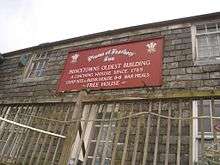
In terms of tourism, Princetown is popular destination and hub for people traversing the moors, and the sight of large groups of hikers and walkers is especially common during the summer months. A bunkhouse, bed and breakfast and camping facilities are available in the village and there are also a handful of local shops.
Princetown has a brewery producing the appropriately named Jail Ale, Legend and Dartmoor IPA. This used to be housed in the Prince of Wales pub, but now occupies a modern purpose-built building on the edge of the village, close to the former railway. The other pub is the Plume of Feathers (the Railway Inn – "The Devils Elbow" – has closed as a pub recently) and there are also two cafés, one of which is in the former police station.
In recent years Princetown has seen the opening of both the Princetown Centre for Creativity in Duchy Square (which closed in 2011), on the site of the former village supermarket, and a new village community centre, which also houses a GP surgery, library and pre-school.
Climate
Princetown, like the rest of Dartmoor, experiences colder and wetter weather than most of Devon, especially because of its high altitude. Snow is uncommon but is usually heavy when it does fall.[6]
Transport
A summer bus service, the Transmoor link (no. 82 bus) between Plymouth and Exeter, passes through the village and there is a daytime service linking Princetown to Yelverton and Tavistock.[7] The Transmoor link operates in the winter, but only on Sundays.
Notes
- ↑ Despite its name, Princetown is not classed as a town today – it is not included in the County Council's list of the 29 towns in Devon: "Devon Town Profiles". Devon County Council. Retrieved 5 May 2013.
References
- 1 2 Pevsner, Nikolaus (1989) [1952]. Cherry, Bridget, ed. The Buildings of England: Devon. Harmondsworth: Penguin Books. pp. 695–6. ISBN 0-14-071050-7.
- ↑ Hoskins, William George (1954). Devon. Phillimore & Company, Limited. ISBN 1-86077-204-8. Retrieved 28 June 2008.
- ↑ "North Hessary Tor and Radio/TV Station, Devon". PictureTheUK. Retrieved 5 May 2013.
- ↑ http://www.dartmoor-npa.gov.uk/__data/assets/pdf_file/0015/43440/pl_dnp-_population-projection-2010.pdf
- ↑ http://www.devon.gov.uk/dnpbaselineprofile.pdf
- ↑ http://www.dartmoor.gov.uk/learningabout/lab-printableresources/lab-factsheetshome/lab-climateweather
- ↑ http://www.cartogold.co.uk/Devon_Transport/timetables/98_Tavistock-Princetown.pdf
External links
| Wikimedia Commons has media related to Princetown. |
| Wikisource has original text related to this article: |
| Wikivoyage has a travel guide for Princetown. |
- Princetown at DMOZ